#eurasian carp
Text
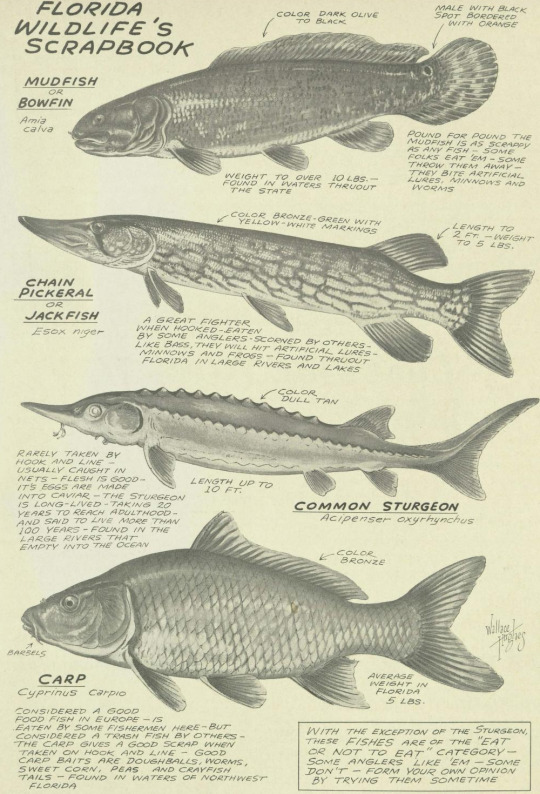
Florida Wildlife; vol. 11, no. 11. April, 1958. Illustration by Wallace Hughes.
Internet Archive
#marine life#fish#bowfin#pike#chain pickerel#sturgeon#atlantic sturgeon#carp#eurasian carp#Wallace Hughes
187 notes
·
View notes
Photo

いつもの場所に鯉が5匹かたまっていた(5月1日)
2 notes
·
View notes
Text
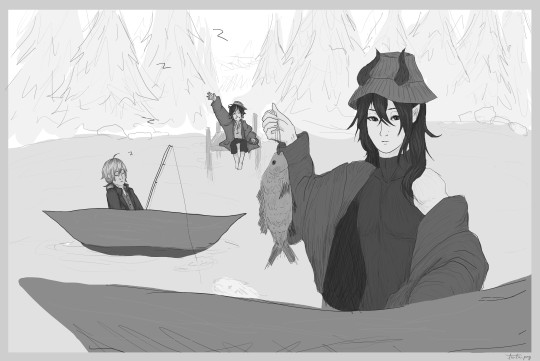
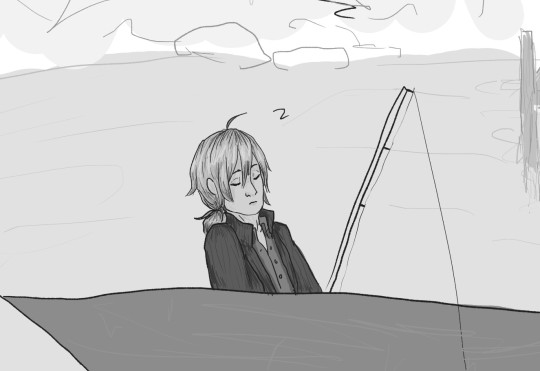


diasomnia fishing trip yippeeee (aka the most elaborate joke i've drawn so far)
#i imagine sebek's the one taking the picture#a friend wanted me to draw a eurasian carp while i was doodling blorbos#and it escalated into “you know how men on tinder hold fish in pfp's? you should draw malleus doing that” and i spent 2 hours doing just th#it was worth the brain damage of trying to learn values ngl#tarta.png#tartart#krita#disney twisted wonderland#disney twst#malleus draconia#silver vanrouge#lilia vanrouge#twst silver#twst malleus draconia#twst lilia vanrouge#twisted wonderland fanart#diasomnia
72 notes
·
View notes
Note
Favorite carp? Individual or species, I'm not picky.
My favorite carp would have to be the Common/Eurasian Carp, Cyprinus carpio!

13 notes
·
View notes
Text
Warrior Cats Prefixes List- G
I had a WC Name Generator on Perchance that I made but I don't seem to have access anymore, so I'm remaking it here as just a simple list. The definitions used are the ones that Clan cats have for those things, and thus are the origins of the names. Definitions used are whatever I found when I googled it.
Gale-: "[noun] a very strong wind"
Gannet-: "[noun] a large seabird with mainly white plumage, known for catching fish by plunge-diving"
Garlic-: "[noun] a strong-smelling pungent-tasting bulb; [noun] the plant, closely related to the onion, that produces garlic bulbs"
Garnet-: "[noun] a precious stone consisting of a deep red vitreous silicate mineral"
Garter-: "[noun] a common, harmless North American snake that typically has well-defined longitudinal stripes and favors damp habitats"
Gentle-: "[adj] having or showing a mild, kind, or tender temperament or character"
Gill-: "[noun] the paired respiratory organ of fish and some amphibians; [noun] the vertical plates arranged radially on the underside of mushrooms and many toadstools"
Ginger-: "[noun] a hot, fragrant spice; [noun] a Southeast Asian plant, which resembles bamboo in appearance, from which ginger is taken; [adj] of a light reddish-yellow or orange-brown color"
Glade-: "[noun] an open space in a forest"
Gleam-: "[noun] a faint or brief light, especially one reflected from something; [verb] shine brightly, especially with reflected light"
Gloom-: "[noun] partial or total darkness; [adj] have a dark or somber appearance"
Glow-: "[noun] a steady radiance of light or heat; [verb] give out steady light without flame"
Glowworm-: "[noun] a soft-bodied beetle with luminescent organs in the abdomen, especially the larva-like wingless female which emits light to attract the flying male"
Goat-: "[noun] a hardy domesticated ruminant animal that has backward curving horns and (in the male) a beard"
Gold-: "[noun] a deep lustrous yellow or yellow-brown color; [adj] made of or colored like gold"
Golden-: "[adj] colored or shining like gold"
Goldfish-: "[noun] a small reddish-golden Eurasian carp"
Goose-: "[noun] a large waterbird with a long neck, short legs, webbed feet, and a short broad bill"
Gopher-: "[noun] a burrowing rodent with fur-lined pouches on the outside of the cheeks"
Gorge-: "[noun] a narrow valley between hills or mountains, typically with steep rocky walls and a stream running through it"
Gorse-: "[noun] a yellow-flowered shrub of the pea family, the leaves of which are modified to form spines, native to western Europe and North Africa"
Gosling-: "[noun] a young goose"
Graceful-: "[adj] having or showing grace or elegance"
Grain-: "[noun] wheat or any other cultivated cereal crop used as food; [noun] a single fruit or seed of a cereal"
Granite-: "[noun] a very hard, granular, crystalline, igneous rock consisting mainly of quartz, mica, and feldspar"
Grass-: "[noun] vegetation consisting of typically short plants with long, narrow leaves; [noun] the mainly herbaceous plant that constitutes grass, which has jointed stems and spikes of small, wind-pollinated flowers"
Grasshopper-: "[noun] a plant-eating insect with long hind legs that are used for jumping and for producing a chirping sound. It frequents grassy places and low vegetation"
Gravel-: "[noun] a loose aggregation of small water-worn or pounded stones"
Gray-: "[noun] gray color or pigment; [adj] of a color intermediate between black and white, as of ashes or lead]"
Green-: "[noun] green color or pigment; [adj] of the color between blue and yellow in the spectrum; colored like grass or emeralds"
Grouse-: "[noun] a medium to large game bird with a plump body and feathered legs, the male being larger and more conspicuously colored than the female"
Grove-: "[noun] a small wood, orchard, or group of trees"
Guppy-: "[noun] a small, livebearing freshwater fish"
Gust-: "[noun] a brief, strong rush of wind"
5 notes
·
View notes
Text
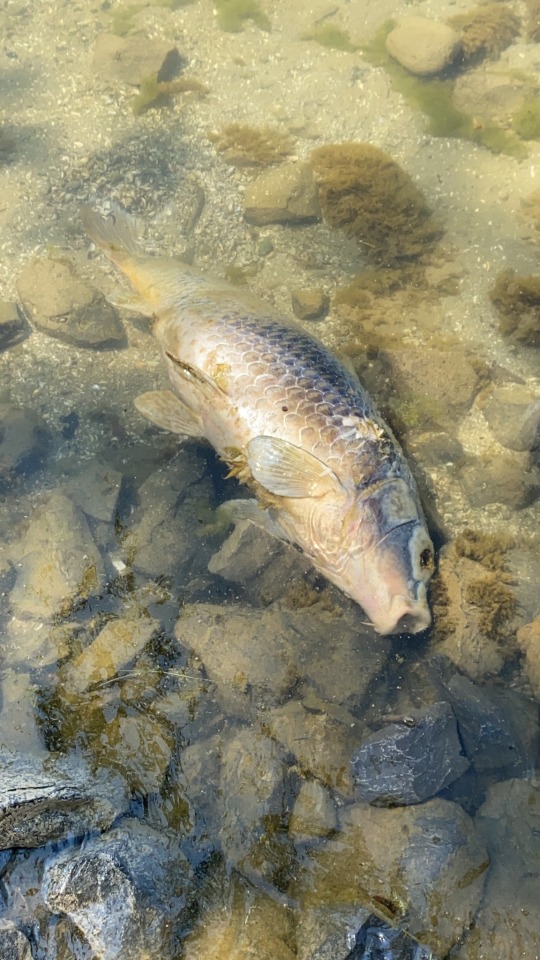
HOLY FUCKING SHIT YOU GUYS LOOK WHQT I FOUND ITS A EURASIAN CARP ITS LIKE THE SIZE OF MY TORSO I FUCKING WCREWMED WHEN I SAW THIS HOLY SHIT APPLES
11 notes
·
View notes
Text
Here's the last post for the Ufrajozlens! I have one more major species to share with y'all before I move onto other things.
Drakuzlogen (plural noun: Drakuzlogens):
The Drakuzlogens are impressively large and are one of two Ufrajozlen tribal breeds that possess animalistic traits. They have tanned porcelain skin and fur-covered backs that match their hair colour. They also have hands with the sharp talons of an eagle, stag antlers, bull ears and a long, serpentine tail with the glistening scales of a carp. Unlike the other Ufrajozlen tribal breeds, they have specific eye colours and they’re commonly described as either resembling a flaming pearl, a pristine sunset, a dreamy ocean, or a fogbound bismuth. They often wear intricate robes with a rope-like sash and a pair of straw sandals or fur boots. Some Drakuzlogens are seen wearing a draconic helmet or mask, and a cuirass with a gorget, shoulder guards, sleeves, tassets, thigh protection, greaves, and shin guards. They are also seen carrying box-like backpacks that contain scrolls full of stories, art supplies, and basic necessities. Their ancestors are commonly believed to be literal dragons, which helps to explain their draconic appearance and powers. Unlike their ancestors, the Drakuzlogens are unable to shapeshift, but they’re able to harness other abilities such as breathing a poisonous miasma and splitting oceans. Their tribal roles are that of fierce warriors, gift-giving artists, and wise storytellers amongst the Ufrajozlens. They live in the heart of jungles and near beaches, and they possess architecture that’s a mixture between Ottoman, Hanok, and Karnataka.
Evithofuna (plural noun: Evithofunas):
The Evithofunas are the second Ufrajozlen tribal breed that possess animalistic traits unique to their kind. They have beige or umber skin, two massive wings that adorn their back, bird feet, and clawed hands. They also have feathery patches on their chest, back, thighs, crotch, and armpits. The natural colours of Evithofuna hair and feathers resemble those of all known bird species such as bearded vultures, bluejays, Eurasian magpies, and shoebills. They often wore draped garments made from a single piece of cloth or robes dyed from natural flowers. They are also commonly seen wearing jewellery around their neck and a well-decorated mask reflecting their personality and associated bird. Their abilities consist of shapeshifting into an avian hybrid (this version is a larger form of the mythological harpy), communicating with birds, flight, and atmokinesis (weather manipulation). Their tribal roles are that of spiritual hierophants and priestesses as well as musicians who play religious hymns and other harmonious melodies. They are also responsible for carrying out various postal duties. They inhabit hilly and mountainous regions, and they possess a blend of Herodian and Vijayanagara architecture.
#writerscorner#writing#creative writing#fictional species#i hope y'all like the sky inhabitants#these are the last two tribal breeds#i have one more major species to share on this blog#dragons#birds#birds of prey#fantasy#creation#multiverse#part 3/3#looking for moots#looking for mutuals#looking for friends#moots pls
2 notes
·
View notes
Text
Animal Crossing Fish - Explained #191
Brought to you by a marine biologist with an exclusive...
CLICK HERE FOR THE AC FOSH EXPLAINED MASTERPOST!
I’ll level with ya - I almost didn’t do today’s fish because it’s extremely similar to other fish we have covered in this series. What I’m saying is that I’m getting really tired of talking about Cyprinidae fish, the family of fish that comprise the carps, the most numerous of fish families. But, no, I should cover every fish in the series - I mean, I’ve come this far! So today I will cover the Herabuna, which, actually was a bit more interesting than I expected. I’ll explain!

So, the herabuna is the only fish in AC that is exclusive to Japan. It was included in the very first installment of Animal Crossing in 2001 (called Doubutsu no Mori in Japan). When Animal Crossing went international, the herabuna was replaced with the brook trout. So, yeah, an exclusive fish, and and neither the herabuna or the brook trout have appeared in the mainline games since the Gamecube days. Anyway, it may not be *too* much of a loss, considering the herabuna’s sprite is basically just the crucian carp but, like, squished inward. There is a reason for that, though!

The herabuna (Carassius cuvieri), the wild version more commonly known as the Japanese White Crucian Carp, does indeed share the same Genus with all of the goldfish and the crucian carp in the AC games - Carassius. The genus is Eurasian in origin, in which the Japanese White Crucian Carp is endemic to Lake Biwa (that sound familiar) and the Yodo River system in Japan.
Now, I said the “wild version” because the fish called “herabuna” is a the domesticated, cultivated variant. It has a deeper body with a more arched back than its wild counterpart. It is bred to stock other water bodies around Japan for catch-and-release fishing and is raised in China for food. So, you see, just like its cousin the goldfish, it is another domesticated animal let loose in your town’s waterways. :)
And there you have it. Fascinating stuff, no?
#herabuna#carp#freshwater#fish#animal crossing#science in video games#animal crossing fish explained
5 notes
·
View notes
Text
Inspired by the old list I made awhile back ( and just reblogged and edited a bit) this time from the other direction! Animals in Europe but not the US! Some important factors to keep in mind for why this list is shorter
European animals not found in america
- hedgehogs
- true badgers ( American badgers completely unrelated)
- jackals
- old world warblers ( not related to new world warblers)
-True buntings
- chamois
- ibex
- dormice
- desmans
-mole rats
- hamsters
- Jirds,
( old world rats and mice ( not related to new world ones)) ( spiny mice ,harvest mice, wood mouse, etc)
-jerboas
- onagers
- bustards
- old world cuckoos ( ours don’t do the brood parasitism thing they are famous for!)
- sand grouse
- hoopoes
- beeeaters
- native honeybees
- ( formerly) lions
- ( formerly ) dholes
- ( formerly ) buttonquail
-Native old world quail ( unrelated to new world quail)
-native partriges
- rollers
- old world vultures ( unrelated to new world vultures)
- pratincoles
-wild felis cats ( eurasian wildcat and jungle cat)
- old world flycatchers ( unrelated to new world flycatchers) ( includes nightingales)
- wrynecks
- chats
- wallcreepers
- european rabbits ( other rabbit species like our cottontails and pygmy 4 aren’t social! And most of them only live in burrows when they have babies)
- burbot
- Coughs
- Olms
- midwife toads/ painted frogs
- fire bellied toads
-Jackdaws
- native carp
- Agamas
- Native chameleons
- wall lizards
- wild boar
- red deer
-roe deer
-native fallow deer
-Typical or Helicidae snails ( the group that contains pretty much all the large land snail species in temperate climates)
And a bunch of other of course;)
0 notes
Text
in case you where wondering what this weird fishenthusiast has been doing:
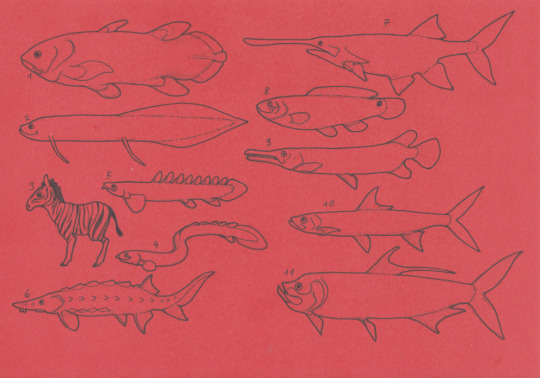



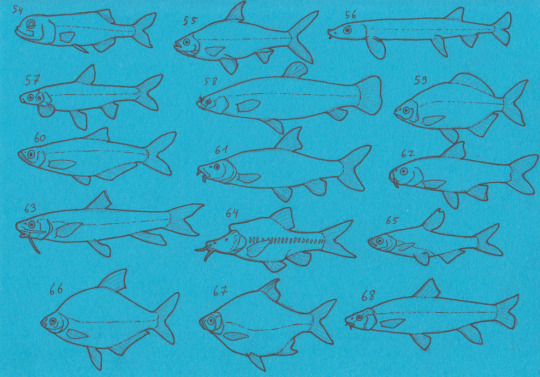
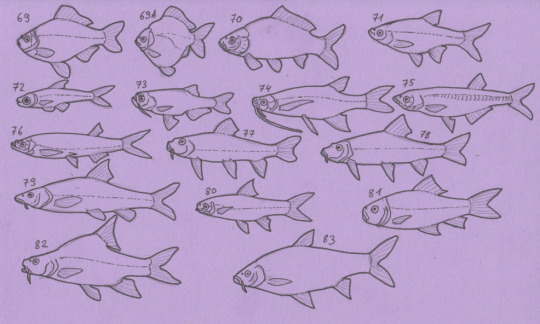
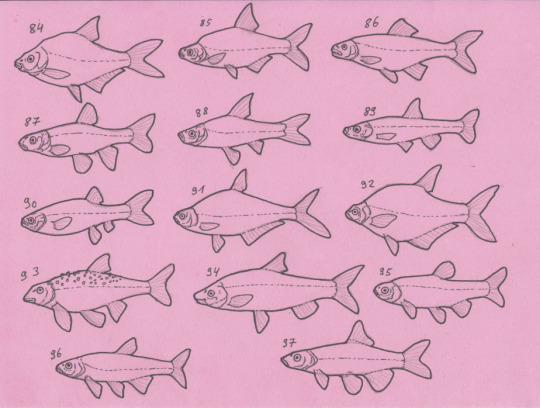
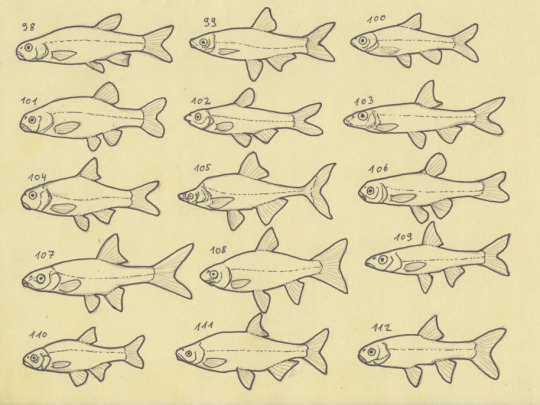
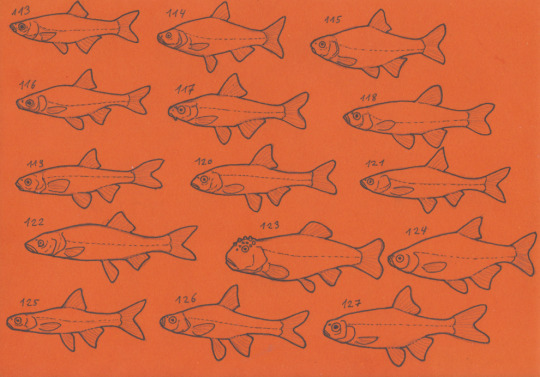
1 Coelacanth 2 Lungfish 3 Tetrapod 4 Ropefish 5 Bichir 6 Sturgeon 7 Paddlefish 8 Bowfish 9 Gar (messed up Maxillary needs correction) 10 Ladyfish 11 Tarpon 12 Japanese gissu 13 bonefish 14 deep sea spiny eel 15 Halosaur 16 Protanguilla 17 cutthroat eel 18 Mud eel 19 thin eel 20 moray eel 21 false moray (u r a FRAUD!) 22 longneck eel 23 snake eel 24 pike conger 25 duckbill eel 26 conger 27 garden eel 28 Bathymyrinae 29 spaghetti eel 30 pelican eel 31 Saccopharynx 32 onejaw gulpers 33 bobtail snipe-eel 34 freshwater eel 35 snipe eel 36 sawtooth eel 37 Mooneye 38 freshwater butterflyfish 39 arowana 40 knifefish 41 aba 42 freshwater elephantfish 43 anchovi 44 denticle herring 45 Pellona 46 Pristigaster 47 wolf herring 48 round herring 49 herring 50 sardine 51 sprat 52 menhaden 53 sprat 54 Slickhead 55 milkfish 56 beaked salmon 57 shellear 58 hingemouth 59 bitterling 60 bleak 61 barbel 62 redfin 63 snowtrout 64 Golden-Line fish 65 sharpbelly 66 white amur bream 67 tinfoil barb 68 khramulyas 69 crucian carp 69A ryukin goldfish 70 common carp 71 carplet 72 rasbora 73 danio 74 flying barb 75 silver cyprinid 76 razorbelly minnow 77 false gudgeons 78 gudgeon 79 steed 80 mud carp 81 labeo 82 yellowfish 83 Leptobarbus 84 common bream 85 bleak 86 chiselmouth 87 longfin dace 88 mexican chub 89 spanish minnowcarp 90 aztec chub 91 bream 92 silver bream 93 stoneroller 94 nase 95 dace 96 redside dace 97 ornate shiner 98 lake chub 99 satinfin shiner 100 desert minnow 101 desert dace 102 longjaw minnow 103 slender chub 104 cutlips minnow 105 western chub 106 flame chub 107 california (roll ) roach 108 silvery minnow 109 bigeye chub 110 least chub 111 hitch 112 spinedace 113 moderlieschen 114 eurasian dace 115 highscale shiner 116 finescale shiner 117 blacktail chub 118 pearl dace 119 spikedace 120 moapa dace 121 peamouth 122 hardhead 123 hornhead chub 124 golden shiner 125 eastern shiner 126 pugnose minnow 127 oregon chub
And I am NOWHERE NEAR finished!
2K notes
·
View notes
Photo

Mountains of the rising sun
This is pretty neat, this is a view of the highest peak in Japan from the second highest peak at sunrise.
Mount Kitadake has a height of 3,193 meters, about 600 meters shorter than the lovely cone in the distance.
Although Japan is famous, even here, for its volcanoes, Kitadake is a mountain of a different sort. It sits within the Minami Alps national park, a long, thin national park in the highest part of the country. Unlike the famous peak in the distance, these mountains are made of sedimentary rocks. They are Paleozoic to Mesozoic in age and have been thrust upward to great heights by the ongoing subduction off the coast.
The rocks formed originally off the coast of the Eurasian continent and they’ve been thrust upwards by the ongoing plate tectonic convergence. Instead of single cones, the Minami Alps form a thin chain of high ground; oriented, linear ridges of sediment that give rise to the rivers that flow to the coastline.
The Minami Alps are one of Japan’s Geoparks, regions designated as having unique geological and geographic character worthy of preservation and further study. With this view I think we can all agree that designation is earned.
-JBB
Image credit: Sky Carp
https://flic.kr/p/oyxyiM
Read more:
http://machiaruki.net/unique_nagano/detail.php?id=102
http://www.geo-itoigawa.com/eng/introduction/jgn.html
#japan#mountains#kitadake#minami alps#geology#Fuji#sunrise#geopark#travel#science#sedimentary#uplift#the earth story
109 notes
·
View notes
Text
IDV Merfolk AU
Emily-White and blue platinum angelfish-2’9”
Emma-Ghost Shark-5’5”
Freddy-Red Bellied Piranha-5’9”
Kreacher-Saddleback Loach-1’5”
Lucky Guy-Common Carp-5’7”
Martha-Common Octopus-5’3”
William-Orca-24’8”
Kurt-Blue Sea Dragon-1’6”
Naib-Clown Knifefish-5’4”
Servais-Sandbar Shark-11’8”
Murro-Killifish-1’4”
Mike-Mandarinfish-1’4”
Margaretha-Pink Mauve Jellyfish-5’3”
Kevin-Zebra Lionfish-2’11”
José-Red Octopus-5’7”
Demi-Cherry Salmon-5’5”
Vera-Coconut Octopus-2’8”
Helena-Devil’s Hole Pupfish-1’3”
Tracy-Eurasian Minnow-1’3”
Norton-Humpback Anglerfish-3’0”
Eli-Japanese Flying Squid-5’10”
Aesop-Glass Catfish-1’7”
Fiona-Purple Betta Fish-1’3”
Patricia-Vampire Squid-5’7”
Victor-Humboldt Squid-12’0”
Andrew-Albino Giant Squid-35’0”
Luca-Electric Eel-10’10”
Edgar-Shiho’s Seahorse-1’4”
Melly-Emerald Green Sea Slug-1’5”
Ganji-Damselfish-1’6”
Leo-Ghost Shark-6’7”
Joker-Maroon Clownfish-3’2”
Bane-Brown Rockfish-6’5”
Michiko-Goshiki Koi-6’1”
Violetta-California Two-Spot Octopus-6’2”
Joseph-Swordfish-10’10”
Mary-Lion’s Mane Jellyfish-18’0”
Burke-Thresher Shark-27’4”
Wu Chang-Zebra Moray-7’0”
Jack-Giant Moray-21’9”
Robbie-Kenyi Cichlid-2’2”
Luchino-Green Moray-19’2”
Ann-Black Ribbon Eel-7’5”
Antonio-Coconut Octopus-3’2”
Galatea-White Molly Fish-2’4”
3 notes
·
View notes
Text
They lurk in our lakes and streams
They lurk in our lakes and streams
Carp that jump over boats, snails that infect ducks with killer flukes, docks crusted with zebra mussels, suburban lakes that are juiced up with lawn fertilizer and matted with Eurasian milfoil and now — Carassius Auratus … goldfish.
Goldfish? Yes, goldfish.
The lakes and ponds that provide Eden Prairie and neighboring communities with jewel-like appeal are under attack by finny pets intended…

View On WordPress
0 notes
Text
UK Man Jailed For Killing Animal That Ate His Fish


A man in the UK has been jailed for two months for deliberately killing an animal for allegedly his fish.
The man identified as Stuart Karl John Jones, shot the Eurasian otter in the head with a rifle in July last year, after the otter ate his valuable carp that was worth up to £40,000 each.
He was sentenced after pleading guilty to deliberately killing a wild animal of a European protected…
View On WordPress
0 notes
Text
Warrior Cats Prefixes List- C
I had a WC Name Generator on Perchance that I made but I don't seem to have access anymore, so I'm remaking it here as just a simple list. The definitions used are the ones that Clan cats have for those things, and thus are the origins of the names. Definitions used are whatever I found when I googled it.
Campion-: "[noun] a plant of the pink family, typically having pink or white flowers with notched petals, found in both Eurasia and North America"
Canary-: "[noun] a mainly African finch with a melodious song, typically having yellowish-green plumage. One kind is popular as a pet bird and has been bred in a variety of colors, especially bright yellow"
Carapace-: "[noun] the hard upper shell of a turtle, crustacean, or arachnid; [noun] something regarded as a protective or defensive covering"
Cardinal-: "[noun] a New World songbird of the bunting family, with a stout bill and typically with a conspicuous crest. The male is partly or mostly red in color"
Carmine-: "[noun] a vivid crimson color"
Carnation-: "[noun] a double-flowered cultivated variety of clove pink, with gray-green leaves and showy pink, white, or red flowers"
Carp-: "[noun] a deep-bodied freshwater fish, typically with barbels around the mouth"
Catalpa-: "[noun] a tree with large heart-shaped leaves, clusters of trumpet-shaped flowers, and long, slender seed pods, native to North America and eastern Asia"
Caterpillar-: "[noun] the larva of a butterfly or moth, having a segmented wormlike body with three pairs of true legs and several pairs of appendages similar to legs. Caterpillars may be hairy, have warning coloration, or be colored to resemble their surroundings"
Cave-: "[noun] a large underground chamber, typically of natural origin, in a hillside or cliff"
Cavern-: "[noun] a cave, or a chamber in a cave, typically a large one"
Cedar-: "[noun] any of a number of conifers that typically yield fragrant, durable timber"
Chaffinch-: "[noun] a Eurasian and North African finch, typically with a bluish top to the head and dark wings and tail"
Chalk-: "[noun] a soft white limestone (calcium carbonate) formed from the skeletal remains of sea creatures"
Chamomile-: "[noun] an aromatic European plant of the daisy family, with white and yellow flowers"
Chanterelle-: "[noun] an edible woodland mushroom with a yellow funnel-shaped cap and a faint smell of apricots, found in both Eurasia and North America"
Cheetah-: "[noun] a large spotted cat found in Africa and parts of Asia. It is the fastest animal on land"
Cherry-: "[noun] a small, round stone fruit that is typically bright or dark red; [noun] the tree that bears the cherry fruit"
Chervil-: "[noun] a plant of the parsley family, with small white flowers and delicate fernlike leaves"
Chrysalis-: "[noun] a quiescent insect pupa, especially of a butterfly or moth"
Chestnut-: "[noun] a glossy brown nut that may be roasted and eaten; [noun] the large European tree that produces the edible chestnut, which develops within a bristly case, with serrated leaves and heavy timber"
Chick-: "[noun] a young bird, especially one newly hatched"
Chickadee-: "[noun] a North American titmouse, in particular: the black-capped chickadee, with distinctive black cap and throat, and the similar but smaller Carolina chickadee"
Chicken-: "a domestic fowl kept for its eggs or meat, especially a young one"
Chicory-: "[noun] a blue-flowered Mediterranean plant of the daisy family, cultivated for its edible salad leaves and carrot-shaped root"
Chime-: "[noun] a melodious ringing sound, as produced by striking a bell; [verb] to make melodious ringing sounds"
Chinchilla-: "[noun] a small South American rodent with soft gray fur and a long bushy tail; [noun] a cat or rabbit of a breed with silver-gray or gray fur"
Chipmunk-: "[noun] a burrowing ground squirrel with cheek pouches and light and dark stripes running down the body, found in North America and northern Eurasia"
Chirp-: "[verb] (typically of a small bird or an insect) utter a short, sharp, high-pitched sound; [noun] a short, sharp, high-pitched sound"
Chive-: "[noun] a widely cultivated small Eurasian plant related to the onion, with purple-pink flowers and dense tufts of long tubular leaves"
Cicada-: "[noun] a large homopterous insect with long transparent wings, occurring chiefly in warm countries. The male cicada makes a loud shrill droning noise by vibrating two membranes on its abdomen"
Cinder-: "[noun] a small piece of partly burned coal or wood that has stopped giving off flames but still has combustible matter in it"
Cinnamon-: "[noun] an aromatic spice made from the peeled, dried, and rolled bark of a Southeast Asian tree; [noun] the tree which yields cinnamon"
Clam-: "[noun] a marine bivalve mollusk with shells of equal size"
Clay-: "[noun] a stiff, sticky fine-grained earth, typically yellow, red, or bluish-gray in color and often forming an impermeable layer in the soil"
Clear-: "[adj] transparent; unclouded"
Cliff-: "[noun] a steep rock face, especially at the edge of the sea"
Cloud-: "[noun] a visible mass of condensed water vapor floating in the atmosphere, typically high above the ground"
Cloudberry-: "[noun] a dwarf bramble that has white flowers and edible orange fruit and that grows on the mountains and moorlands of northern Eurasia and northern North America; [noun] the fruit of the cloudberry plant"
Clouded-: "[verb] (of the sky) become overcast with clouds (past tense); [verb] make or become less clear or transparent (past tense)"
Cloudy-: "[adj] (of the sky or weather) covered with or characterized by clouds; overcast; [adj] not transparent or clear"
Clove-: "[noun] the dried flower bud of a tropical tree, used as a pungent aromatic spice; [noun] the Indonesian tree from which cloves are obtained"
Clover-: "[noun] a herbaceous plant of the pea family that has dense, globular flower heads, and leaves that are typically three-lobed"
Cobweb-: "[noun] a spider's web"
Coal-: "[noun] a combustible black or dark brown rock consisting mainly of carbonized plant matter, found mainly in underground deposits"
Coast-: "[noun] the part of the land near the sea; the edge of the land"
Cobalt-: "[noun] short for cobalt blue"
Cod-: "[noun] a large marine fish with a small barbel on the chin"
Cold-: "[noun] a low temperature, especially in the atmosphere, cold weather, a cold environment; [adj] of or at a low or relatively low temperature"
Coltsfoot-: "[noun] a Eurasian plant of the daisy family, with yellow flowers that appear in early spring, followed by large, heart-shaped leaves"
Comet-: "[noun] a celestial object consisting of a nucleus of ice and dust and, when near the sun, a “tail” of gas and dust particles pointing away from the sun"
Comfrey-: "[noun] a Eurasian plant of the borage family, with large hairy leaves and clusters of purplish or white bell-shaped flowers"
Condor-: "[noun] a large New World vulture with a bare head and mainly black plumage, living in mountainous country and spending much time soaring"
Cone-: "[noun] the dry fruit of a conifer, typically tapering to a rounded end and formed of a tight array of overlapping scales on a central axis which separate to release the seeds"
Conifer-: "[noun] a tree that bears cones and needle-like or scale-like leaves that are typically evergreen"
Coot-: "[noun] any of various slaty-black birds of the rail family that somewhat resemble ducks and have lobed toes and the upper mandible prolonged on the forehead as a horny frontal shield"
Copper-: "[noun] a reddish-brown color resembling the color of polished copper"
Coral-: "[noun] an essentially leafless Mexican shrub like a rush with bright-red flowers"
Coralbell-: "[noun] a perennial alumroot widely cultivated for its feathery spikes of tiny usually reddish bell-shaped flowers"
Cormorant-: "[noun] a large diving bird with a long neck, long hooked bill, short legs, and mainly dark plumage"
Corn-: "[noun] a North American cereal plant that yields large grains, or kernels, set in rows on a cob"
Corvid-: "[noun] a bird of the crow family"
Cotton-: "[noun] a soft white fibrous substance that surrounds the seeds of a tropical and subtropical plant and is used as textile fiber and thread for sewing; [noun] the plant that is commercially grown for cotton products"
Cougar-: "[noun] a large American wild cat with a plain tawny to grayish coat"
Cove-: "[noun] a small sheltered bay"
Cow-: "[noun] a fully grown female animal of a domesticated breed of ox, kept to produce milk or beef"
Coyote-: "[noun] a wild dog that resembles the wolf, native to North America"
Crab-: "[noun] a crustacean with a broad carapace, stalked eyes, and five pairs of legs, the first pair of which are modified as pincers"
Crane-: "[noun] any large wading bird of the family Gruidae, characterized by long legs, bill, and neck and an elevated hind toe"
Crayfish-: "[noun] a nocturnal freshwater crustacean that resembles a small lobster and inhabits streams and rivers"
Cream-: "[noun] the thick white or pale yellow fatty liquid which rises to the top when milk is left to stand; [noun] a pale yellowish color that is close to white"
Creek-: "[noun] a stream, brook, or minor tributary of a river"
Crescent-: "[noun] the curved sickle shape of the waxing or waning moon"
Cricket-: "[noun] an insect related to the grasshoppers. The male produces a characteristic rhythmical chirping sound"
Crimson-: "[noun] a rich deep red color inclining to purple; [adj] of a rich deep red color inclining to purple"
Crooked-: "[adj] bent or twisted out of shape or out of place"
Crow-: "[noun] a large bird with mostly glossy black plumage, a heavy bill, and a raucous voice"
Crowberry-: "[noun] an evergreen subshrub of subtemperate regions with an inedible tasteless black berry; [noun] the fruit of the crowberry shrub"
Crystal-: "[noun] a piece of a homogeneous solid substance having a natural geometrically regular form with symmetrically arranged plane faces"
Cuckoo-: "[noun] a medium-sized long-tailed bird, typically with a gray or brown back and barred or pale underparts. Many cuckoos lay their eggs in the nests of small songbirds"
Curl-: "[noun] something having a spiral or inwardly curved form, especially a lock of hair; [verb] form or cause to form into a curved or spiral shape"
Curlew-: "[noun] a large wading bird of the sandpiper family, with a long down-curved bill, brown streaked plumage, and frequently a distinctive ascending two-note call"
Curly-: "[adj] made, growing, or arranged in curls or curves"
Currant-: "[noun] a small dried fruit made from a seedless variety of grape originally grown in the eastern Mediterranean region; [noun] a Eurasian shrub which produces small edible black, red, or white berries"
Cyclone-: "[noun] a system of winds rotating inward to an area of low atmospheric pressure; [noun] another term for a tropical storm"
Cygnet-: "[noun] a baby swan"
Cypress-: "[noun] an evergreen coniferous tree with small rounded woody cones and flattened shoots bearing small scale-like leaves"
#warrior cats#worldbuilding#comets probably aren't something the Clans know about but I think it's a cool prefix ok#'why aren't crouch- and claw- here?' bc I don't think they should be prefixes that's why#cloud is also defined as a state or cause of gloom suspicion trouble or worry#which actually suits cloudtail's beginning just as much as the normal definition
1 note
·
View note
Text
UK Man Jailed For Killing Animal That Ate His Fish (Photos)

A man in the UK has been jailed for two months for deliberately killing an animal for allegedly his fish.
The man identified as Stuart Karl John Jones, shot the Eurasian otter in the head with a rifle in July last year, after the otter ate his valuable carp that was worth up to £40,000 each.
He was sentenced after pleading guilty to deliberately killing a wild animal of a European protected species, namely a Eurasian otter (Lutra lutra), contrary to the Conservation of Habitats and Species Regulations 2017.
He also pleaded guilty to an offence of using a trap for the purpose of killing, taking or restraining a wild animal listed on Schedule 6 contrary to the Wildlife and Countryside Act 1981.

Prosecutor Victoria Hill told the court a group of people witnessed the incident after visiting the lake between July 7 and July 11 last year.
They had been staying at a campsite on one of Jones’ lakes when they saw a fisherman catch the otter in a net and shout for somebody to fetch Jones, with Ms Hill explaining: ‘They thought it was being caught to be relocated.’
The prosecutor continued:
But when the defendant arrived with his wife and daughter he was carrying a rifle. He pulled the bolt back on the rifle, put it to the back of the otter’s head and pulled the trigger. The otter seemed to thrash a few times and then it was deceased.
If people were to behave in the way this defendant has, the impact on the otter population as a whole would be devastating. That’s why they are a protected species.

You’re breaking the law if you: capture, kill, disturb or injure otters; damage or destroy a breeding or resting place; obstruct access to their resting places; or possess, sell, control or transport live or dead otters.

Anybody found guilty of the above faces an unlimited fine and up to six months in prison, however Jones’ case is the first prosecution of its kind in the UK.
Read the full article
0 notes